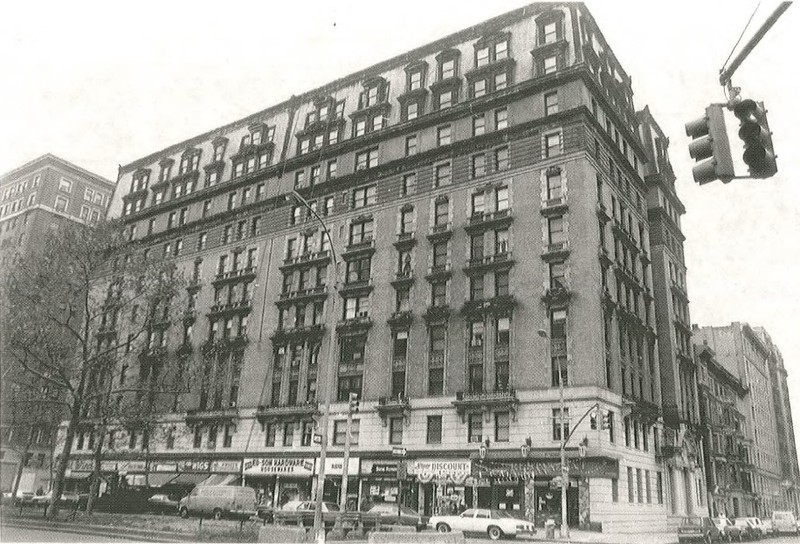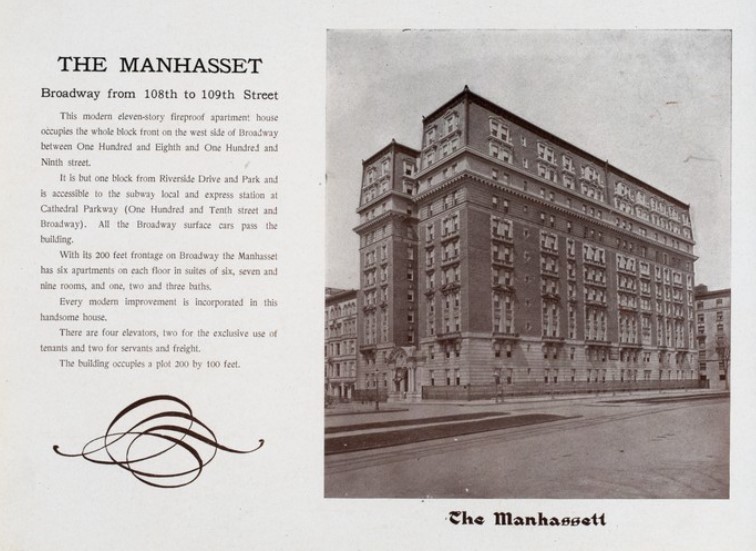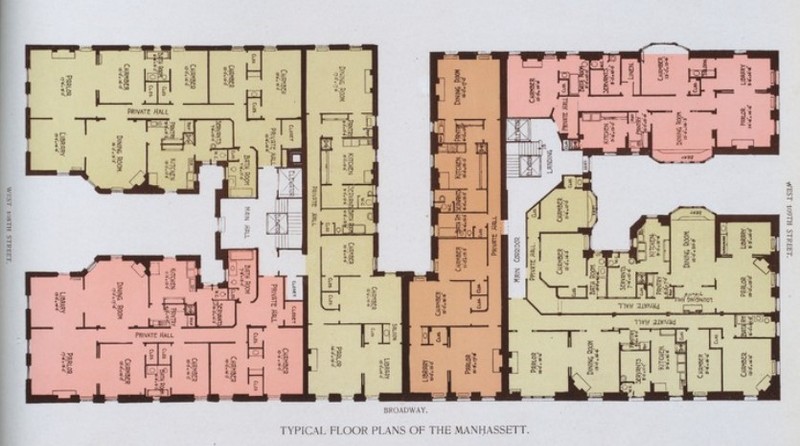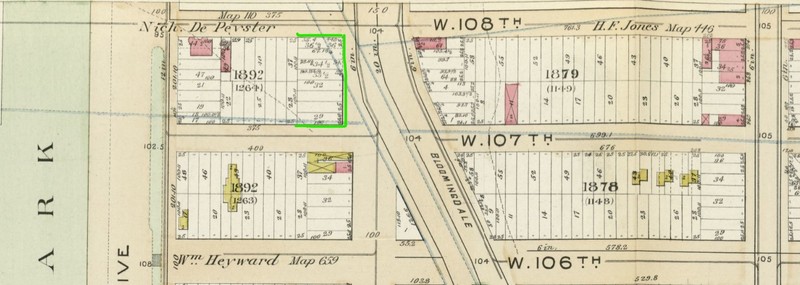Manhassat Apartments
Introduction
Text-to-speech Audio
New York's Manhassat Apartments were constructed in 1899. The Beaux Arts style building features a distinctive French mansard slate roof and is home to numerous apartments, and in 1910, the building was modified to include commercial spaces on the street level on the side of the building facing Broadway. The Manhassat Apartments is a New York City landmark and contributes to the Broadway-Riverside Drive Historic District. The apartments are near the north end of the Bloomingdale neighborhood/ south end of the Morningside Heights neighborhood and historic district. The building is still a residential co-op with commercial spaces along Broadway.
Images
Manhassat Apartments building along west side of Broadway in 1983, view from corner with W 109th St. (NYLC)

Manhasset Apartments photo and description in 1910 NYC apartments guidebook (The World p. 76)

Typical floor plans of the Manhasset in 1910 NYC apartments guidebook (The World p. 77)

Future location of Manhassat Apartments (green) on 1894 atlas of Manhattan (Bromley p. 37)

Backstory and Context
Text-to-speech Audio
John W. Noble Jr. purchased the lots to build the Manhasset Apartments in 1899 from Jacob D. Butler. Noble was the brother of real estate developer William Noble; the pair joined forces as William Noble & Company and hired architect Joseph Wolf. The original plans were for an eight-story building in two sections topped with a cornice. The building's two entrances were at 301 W. 108th and 300 W. 109th Streets; four composite columns flank entries and support an arched pediment. The exterior is limestone, brick, and terra cotta. The Nobles were heavily in debt - they mortgaged half of the purchase from Butler - and filed for bankruptcy in 1899. Somehow they managed to keep building the luxury apartment building. Jacob D. Butler foreclosed on the mortgage and seized the new building in 1901. William Noble suffered a stroke and died in May 1902.
Butler announced plans in February 1902 to expand the building with three additional stories with a mansard roof. Another architectural firm, Janes & Leo, took on the new construction. The interior layout was altered to create more apartments per floor. The original plans were for three or four apartments per floor; the new layout was for six apartments per floor in suites of six to nine rooms. Tenants were finally able to occupy the apartments in 1905.
A 1910 guidebook to New York luxury apartments described the Manhasset as a modern eleven-story fireproof apartment house with every modern convenience. Two of the building's four elevators were reserved for tenants while the others were for servants or freight. Butler sold the property in 1910 for $3 million to Realty Assets Company; the street-level spaces along Broadway were then converted into 14 storefronts under the guidance of architect Clarence Shunway. This involved digging the building's foundations four feet deeper. The builders managed to keep the upper floors occupied by renters during all of this upheaval. The new owner of the Manhasset in 1919 was Frank N. Hoffstot, the Pressed Steel Car Company president. A later owner lost the building to bankruptcy in 1932.
The building was almost finished being renovated in 1999 when a fire started in a ground-floor restaurant and spread through the building. The Manhasset then contained 134 apartments with about half being rent-regulated and the other half as co-ops. Many residents were able to return to their apartments in three months; the more heavily-damaged north end took longer to be repaired.
Some of the recent tenants in the commercial spaces along Broadway include Creative Health, The Pet Market, La Mode Cleaners, and HearUSA.
Sources
Dolkart, Andrew S. Postal, Matthew A. New York City Landmarks Preservation Commission. Guide to New York City Landmarks. Edition Third. New York, NY. John Wiley & Sons, Inc., 2004.
Miller, Tom. The Manhasset - 2801-2825 Broadway, Daytonian in Manhattan blog. May 22nd 2018. Accessed October 5th 2021. http://daytoninmanhattan.blogspot.com/2018/05/the-manhasset-apartments-2801-2825.html.
New York World. The World's Loose Leaf Album of Apartment Houses. New York, NY. New York World, 1910.
Shaver, P. Building-Structure Inventory Form for Manhasset Apartments. Albany, NY. Division of Historic Preservation, New York State Parks and Recreation, 1997.
White, Norvall. Willensky, Elliot. Leadon, Fran. American Institute of Architects New York Chapter. AIA Guide to New York City. Edition Fifth. New York, NY. Oxford University Press, 2010.
New York State Cultural Resource Information System (NYS CRIS): https://cris.parks.ny.gov/
New York Public Library (NYPL) Digital Collections: https://digitalcollections.nypl.org/items/510d47da-d773-a3d9-e040-e00a18064a99/
NYPL: https://digitalcollections.nypl.org/items/510d47da-d773-a3d9-e040-e00a18064a99/
Library of Congress (LOC): https://www.loc.gov/item/2010587355/
